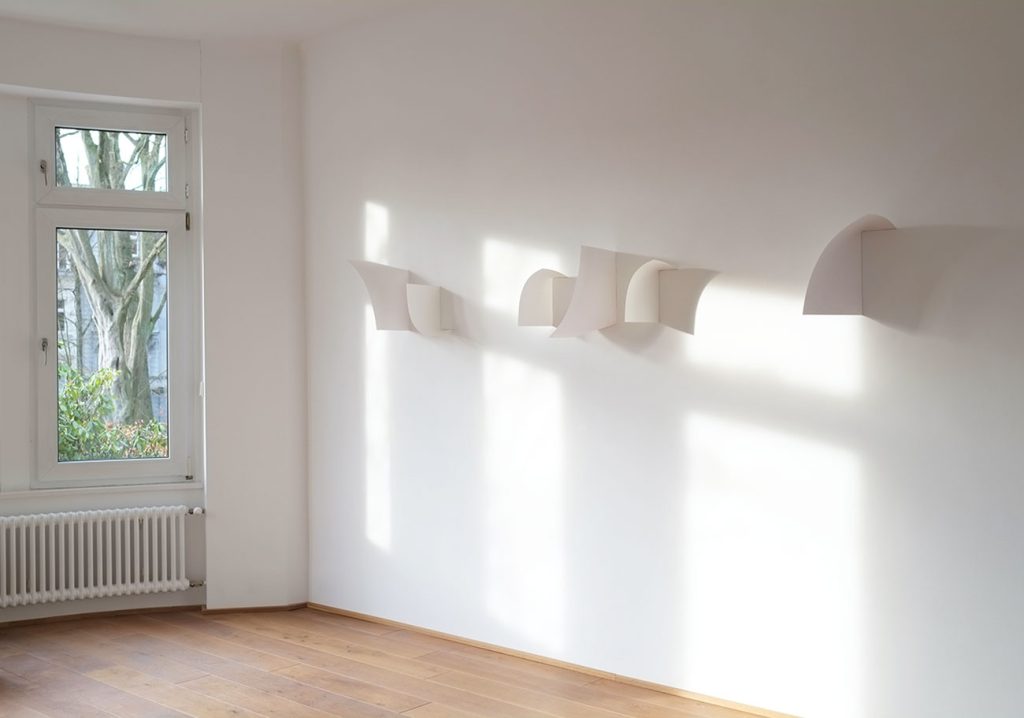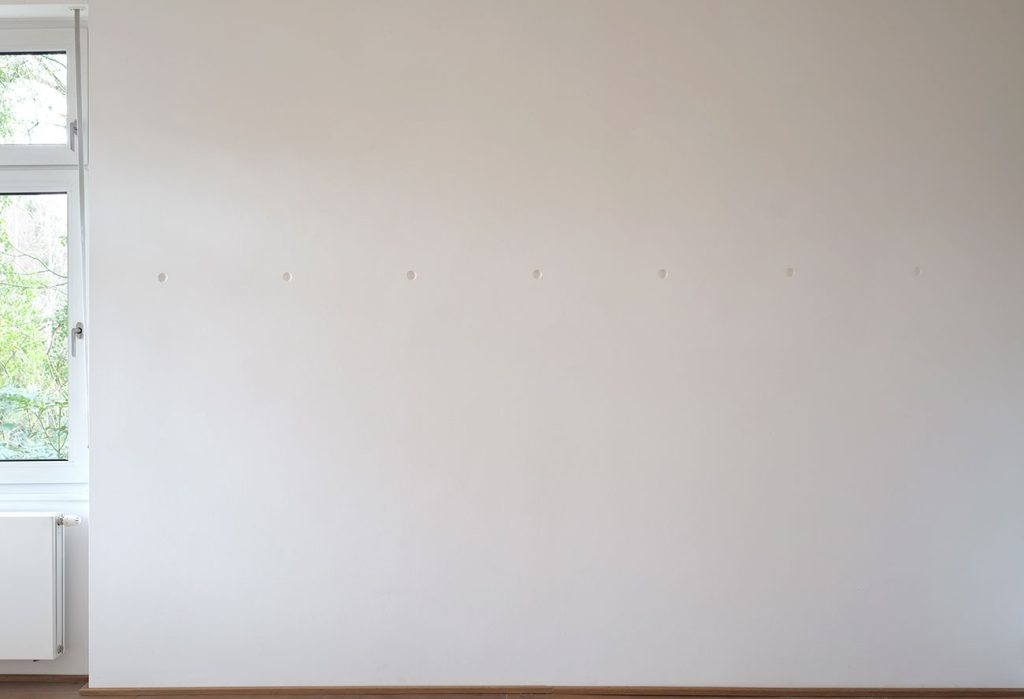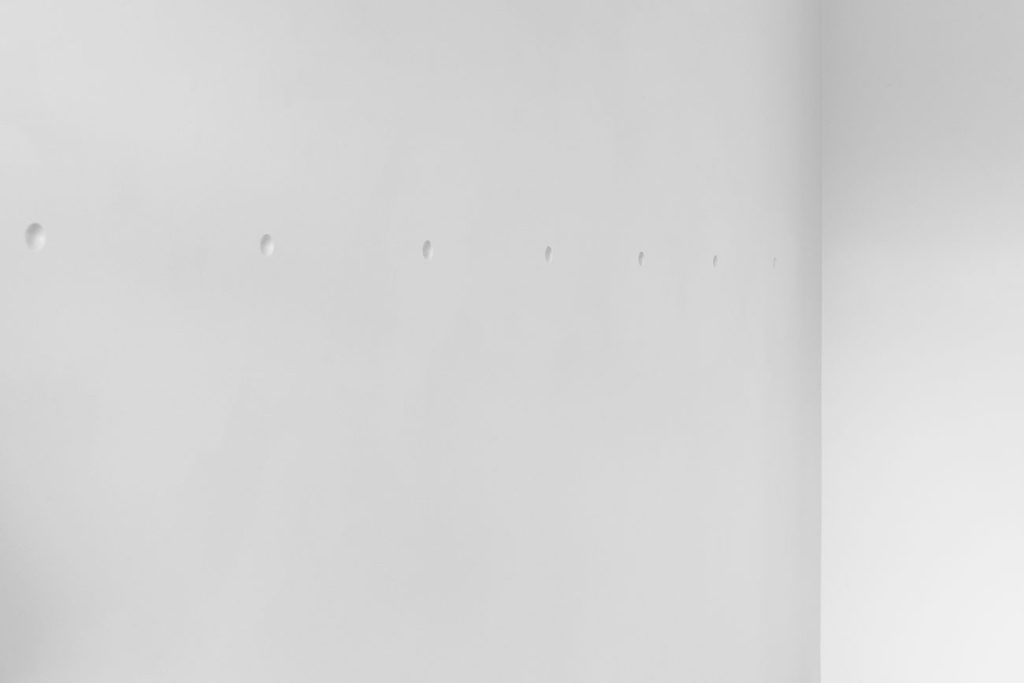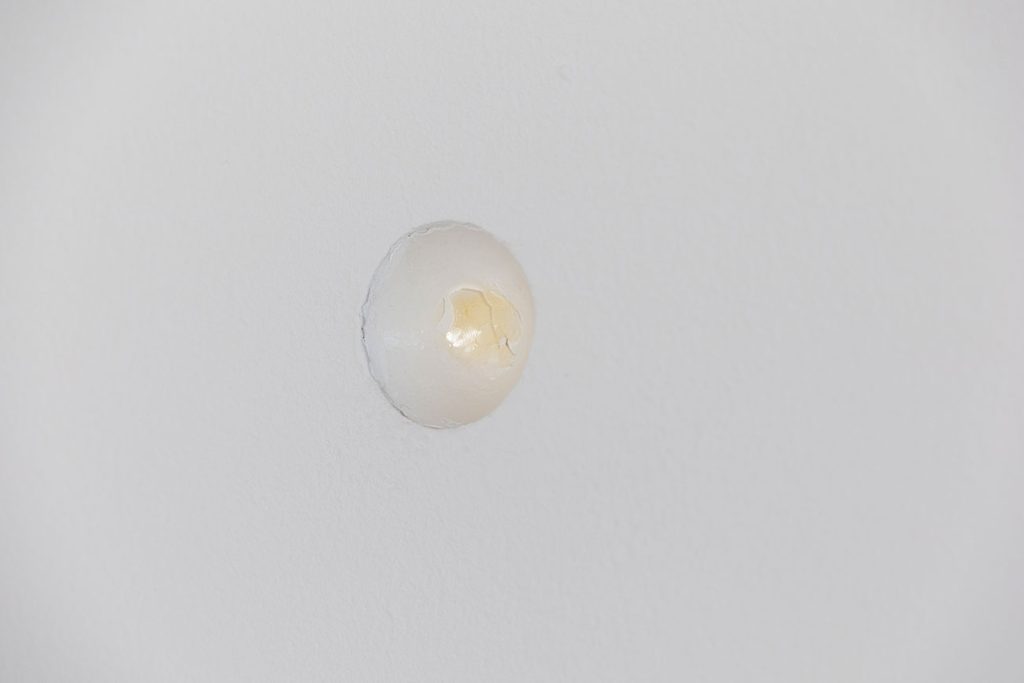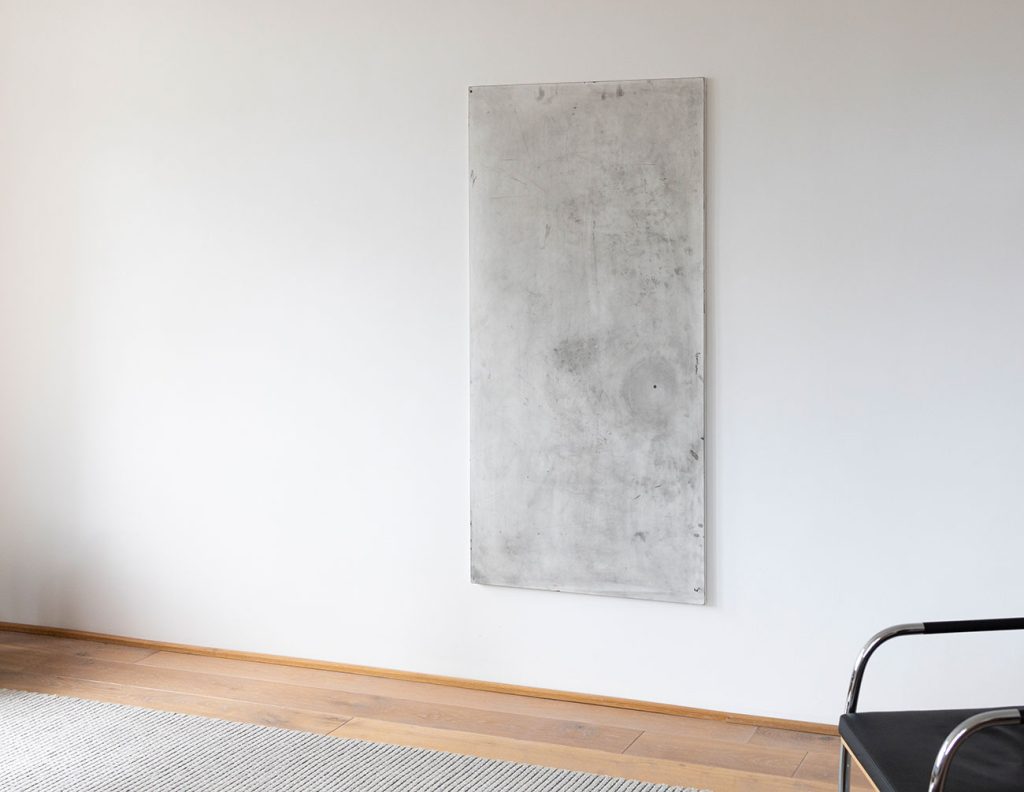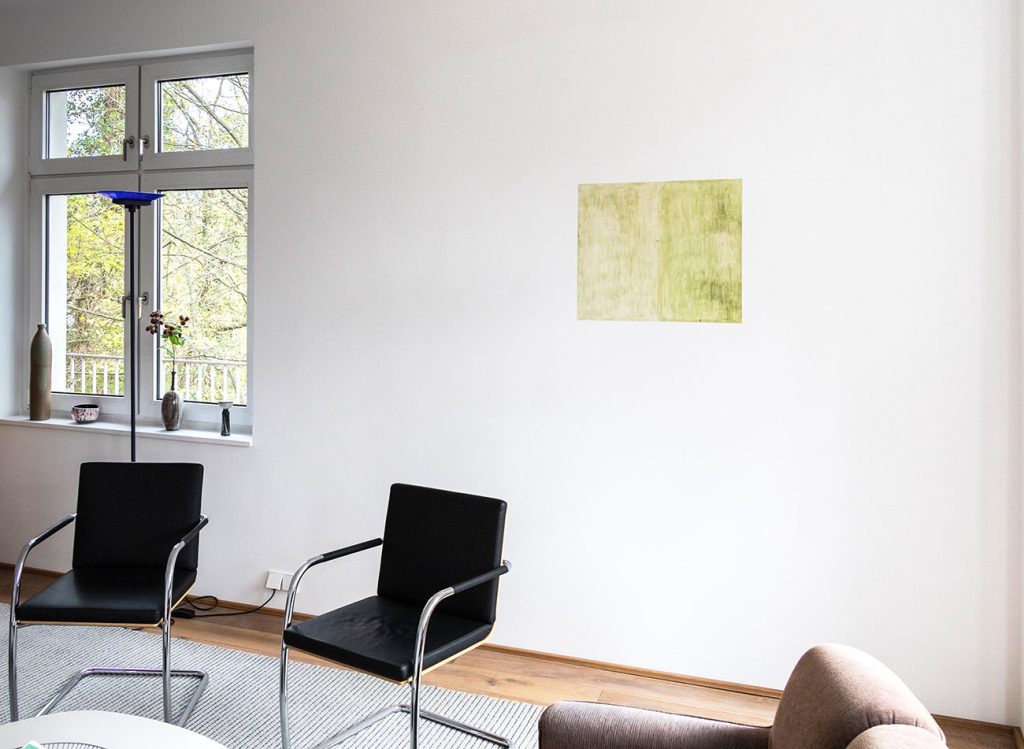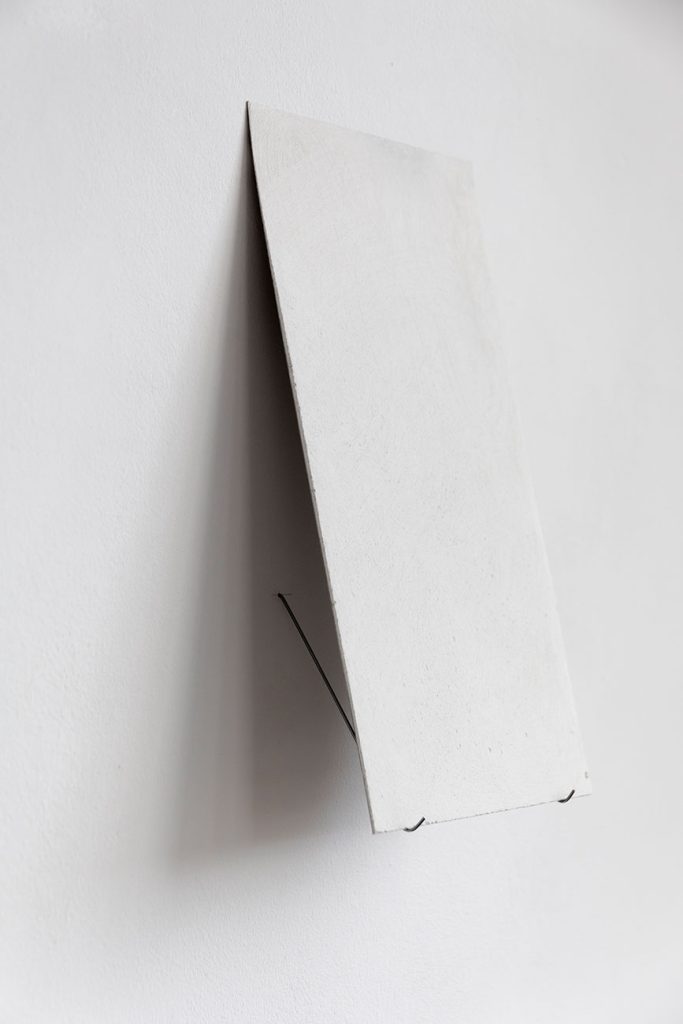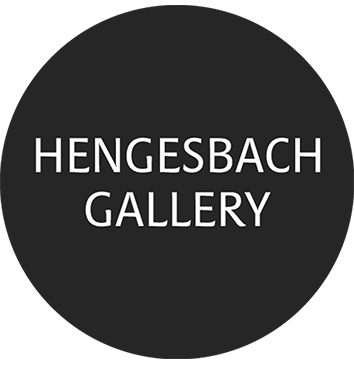David Semper
November 10, 2020 – March 28, 2021
David Semper moderates a sculptural dialogue between the interior and the exterior, between the organic and the inorganic. In the course of this dialogue, it becomes apparent that the nature of the one can transform into the nature of the other, or that the transition can be experienced as fluid. One of the sculptural strategies for conducting this dialogue is the gentle enclosing, in which two very dissimilar materials are joined together and begin to speak with one another about what they are, what they are not, and what they only seem to be. Through these conversations, a turning inward, a reversal, and a breaking open of the materials takes place—something that can also lead to a turning inward of ourselves, since we, in our corporeality, share a close relationship with these materials.
The inner side of an organically formed eggshell becomes the outer side of a wall, after being flush-mounted and very gently inserted into it—mindful of its own fragility. In contrast to the material vulnerability of the eggshell itself, the insertion simultaneously appears as an indentation of the wall, raising the question of how the wall, in its relentless hardness and resistance, suddenly seems to become soft, evokes a suggestion of touch, and takes on the character of something organic—because we imagine that our thumb pressed into the wall and caused this indentation. This indentation differs from the surface quality of the surrounding wall through a specific smoothness and a shimmering, minimally varying color tone that could not have been produced by a coat of paint. In this, too, the indentation seems to relate to us, as it implicitly brings to mind the varying smoothnesses and skin tones of different regions of our own body.
Astonishingly, the indentation in the wall is also not perceived by the light as a foreign body, not as something confronting the light with its outer surface, but rather as a natural occurrence that almost invites the light to join in its gentle modulation, causing soft shadows to fall differently again and again.
The specificity of each individual eggshell becomes visible in the sequence, in the contrast to the neighboring indentation, in the varying smoothness and color. To make the uniqueness of these subtle differences perceptible even in the spacing between them, Semper did not use an external, metric measure but rather his own forearm length as a tension arc.
Papers unfold from a wall. This is only possible because the wall has undergone a wound, through a sharp horizontal and a vertical cut, into which papers have been carefully inserted. A sheet of paper is an ambivalent thing. It seemingly consists only of two outer sides, has no inside—just surface and no volume. In its lack of volume, it follows every change in direction and, in emerging from the wall, confirms this impression, since it is simultaneously oriented vertically and horizontally.
But then something becomes tangible in the paper that cannot be reconciled with its material “insignificance”: with increasing distance from the wall, the paper acquires its own strength and tension. It no longer adheres to the predetermined direction but begins to turn. This turning toward softness is incompatible with the hard, inorganic wall. The “turning” increasingly becomes a curvature, in which a tension seems to build—one that stems from the organic fibrousness of the paper, which, despite its fragility, generates an inner resistance.
The curvature is comparable to a sail that swells—except here, the wind is missing. Instead, these sails seem to capture something else, something less tangible than the wind: light. They absorb part of it and leave behind a gentle shadow on the wall. If the paper were not there, the wall would simply let the light glide along it and gradually fade. The different curvatures, the movement toward or away from the light, and the contrast to the cut in the wall reveal the internal organic tension of the paper, despite its thinness and uniformity—which endow the paper with its ability to record writing and its stackability.
But Semper does not let this curvature stand alone as an isolated phenomenon; instead, he relates it to the curvatures of other papers, thus creating a gesture of enfolding, of enclosing, or of leaning in. In this way, organic gestures suddenly emanate from the inorganic wall.
Installation Views
